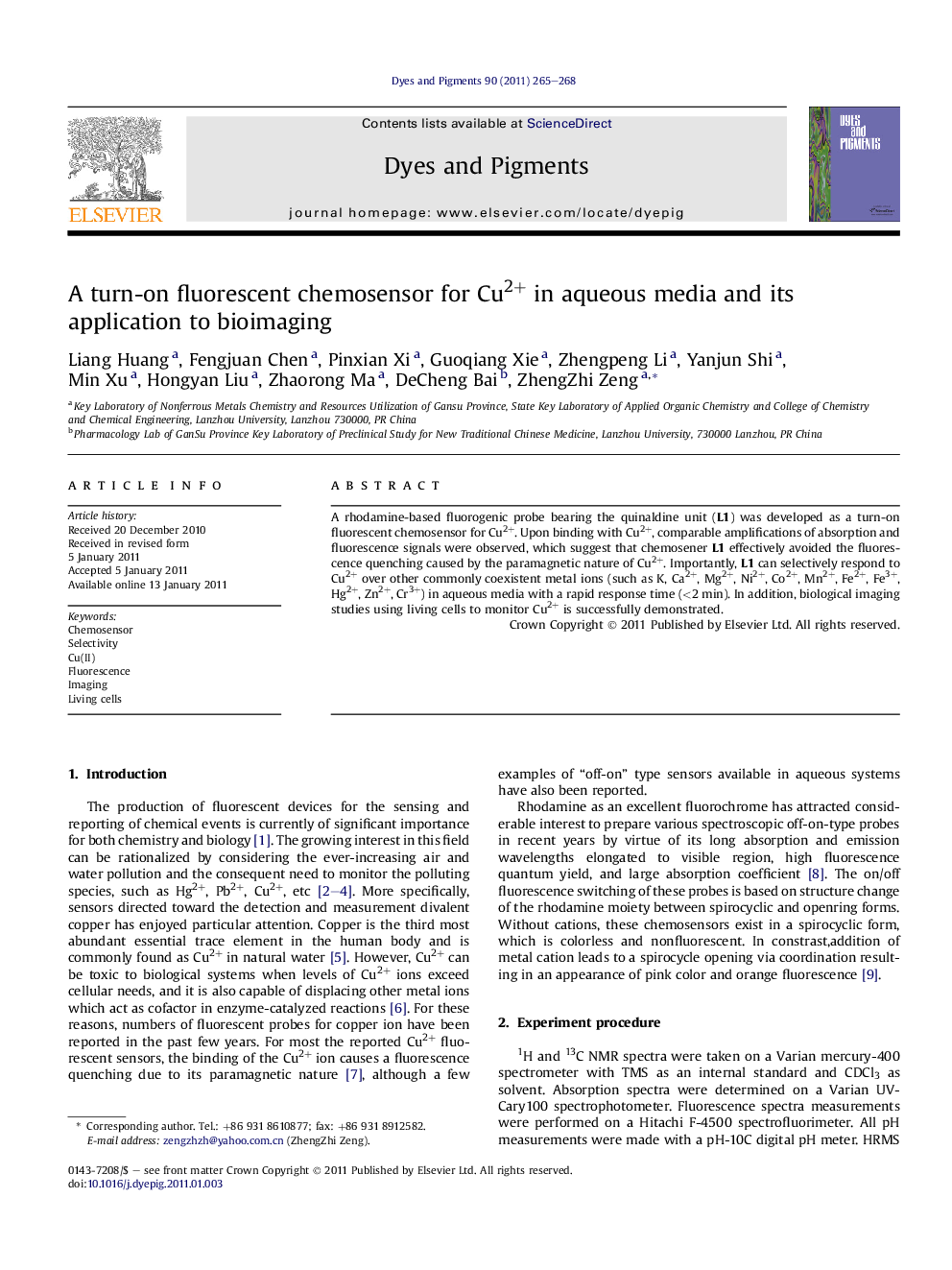| Article ID | Journal | Published Year | Pages | File Type |
|---|---|---|---|---|
| 177094 | Dyes and Pigments | 2011 | 4 Pages |
A rhodamine-based fluorogenic probe bearing the quinaldine unit (L1) was developed as a turn-on fluorescent chemosensor for Cu2+. Upon binding with Cu2+, comparable amplifications of absorption and fluorescence signals were observed, which suggest that chemosener L1 effectively avoided the fluorescence quenching caused by the paramagnetic nature of Cu2+. Importantly, L1 can selectively respond to Cu2+ over other commonly coexistent metal ions (such as K, Ca2+, Mg2+, Ni2+, Co2+, Mn2+, Fe2+, Fe3+, Hg2+, Zn2+, Cr3+) in aqueous media with a rapid response time (<2 min). In addition, biological imaging studies using living cells to monitor Cu2+ is successfully demonstrated.
Research highlights► A fluorogenic probe bearing the quinaldine unit (L1) was developed as a fluorescent chemosensor with highly sensitive toward Cu2+ over other cations tested. ► In addition, biological imaging studies to monitor Cu2+ is successfully demonstrated.
